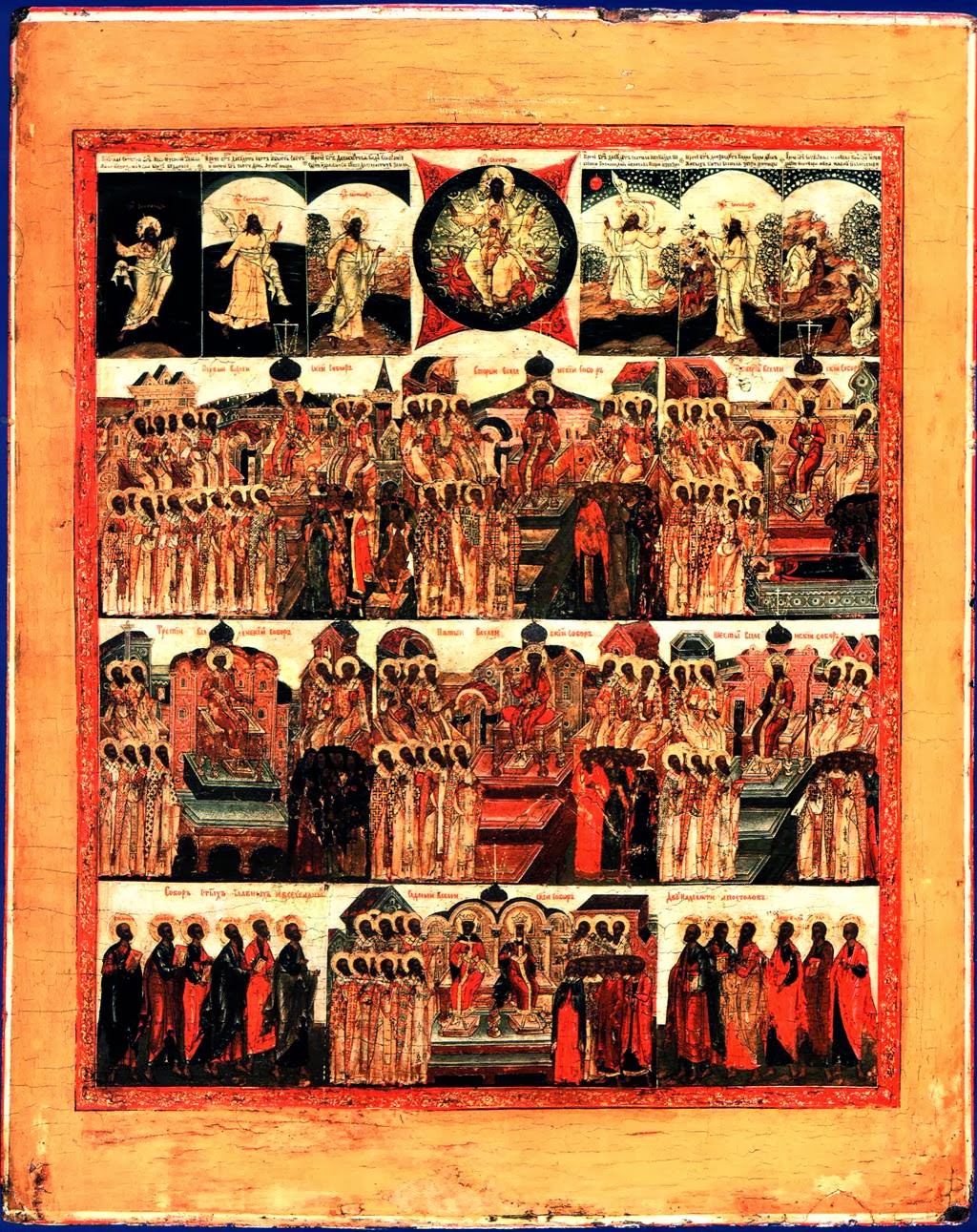Unveiling the Seven Ecumenical Councils: A Journey Through Christian History
Stepping into the grand tapestry of Christian history, one encounters pivotal moments that shaped the very fabric of its beliefs. These moments, crystallized in seven ecumenical councils, offer a fascinating glimpse into the evolution of Christian thought and practice. What were these gatherings, and why do they hold such significance even today?
The seven ecumenical councils, recognized by both Eastern Orthodox and Catholic traditions (with some variations in the latter concerning the Fifth Council), were gatherings of bishops and other Church leaders from across the Christian world. Convened over centuries, these councils sought to address pressing theological disputes, define core doctrines, and establish a unified understanding of the Christian faith. Imagine them as defining moments, like meticulously crafted stitches in the rich fabric of Christian tradition.
From Nicaea in 325 AD to Nicaea II in 787 AD, these councils dealt with complex theological issues, ranging from the nature of Christ to the veneration of icons. The first council, held in Nicaea, confronted the Arian controversy, which questioned the divinity of Jesus Christ. This pivotal gathering established the Nicene Creed, a cornerstone of Christian belief that affirms the consubstantiality of the Father and the Son. Subsequent councils further refined Christian doctrine, addressing issues such as the Holy Spirit, the two natures of Christ (divine and human), and the role of icons in worship.
Understanding the seven ecumenical councils requires appreciating their historical context. These gatherings were not mere academic debates but responses to real-world challenges facing the early Church. They reflect the struggles of a burgeoning faith grappling with complex philosophical and theological questions, often amidst political and social upheaval. The decisions made at these councils profoundly impacted the development of Christian theology, shaping the liturgical practices and beliefs that continue to resonate within various denominations today.
Exploring the seven ecumenical councils reveals a complex interplay of theological discourse, political maneuvering, and personal convictions. These gatherings provide invaluable insights into the development of Christian doctrine and the challenges faced by the early Church. They are not simply historical events but rather living testaments to the ongoing quest for understanding and unity within the Christian faith.
The councils, in chronological order, are: First Council of Nicaea (325), First Council of Constantinople (381), Council of Ephesus (431), Council of Chalcedon (451), Second Council of Constantinople (553), Third Council of Constantinople (680-681), and Second Council of Nicaea (787).
One key benefit of studying these councils is a deeper understanding of Christian doctrine. For example, the Council of Ephesus affirmed Mary as the Theotokos (God-bearer), clarifying Christ's divine nature. Another benefit is gaining insight into the historical development of the Church. The councils showcase how the early Church navigated complex theological disputes and sought to maintain unity. Finally, studying these councils fosters ecumenical dialogue, as it reveals shared historical roots and doctrinal foundations among different Christian traditions.
Frequently Asked Questions about the Seven Ecumenical Councils:
1. Why are they called "ecumenical"? Ecumenical means "worldwide" or "universal," reflecting the intended representation of the entire Christian Church.
2. Are all seven councils recognized by all Christians? While the first seven are generally recognized by Eastern Orthodoxy and Catholicism, some Protestant denominations have different views on the authority of later councils.
3. What is the Nicene Creed? It is a statement of faith formulated at the first two ecumenical councils, summarizing core Christian beliefs about God, Jesus, and the Holy Spirit.
4. What was the Arian controversy? It was a theological dispute concerning the nature of Christ, with Arius arguing that Jesus was not fully divine but a created being.
5. What is the significance of the Council of Chalcedon? It defined the doctrine of the Hypostatic Union, stating that Christ is one person with two distinct natures: fully divine and fully human.
6. Why was the Second Council of Nicaea important? It addressed the iconoclastic controversy, affirming the appropriateness of venerating icons in Christian worship.
7. How do the councils impact the church today? They laid the foundation for Christian doctrine and continue to shape theological discussions and liturgical practices.
8. Where can I learn more about the ecumenical councils? Numerous resources are available, including scholarly books, online articles, and even dedicated apps.
In conclusion, the seven ecumenical councils stand as monumental milestones in the journey of the Christian faith. These gatherings, spanning several centuries, shaped the very essence of Christian doctrine, addressing complex theological disputes and fostering a shared understanding of core beliefs. From Nicaea to Nicaea II, the councils provided a platform for dialogue, debate, and ultimately, the formulation of doctrines that continue to resonate within various Christian denominations today. By exploring these councils, we gain a deeper appreciation for the rich tapestry of Christian history and the ongoing quest for unity and understanding within the faith. Understanding these pivotal moments allows us to better comprehend the complexities of Christian theology and the enduring legacy of these formative gatherings. Engage with the history, delve into the debates, and discover the profound impact of the seven ecumenical councils on the Christian faith.
Unlocking value your guide to the elk river hwy 10 recycling center
Conquer the pitch your guide to fifa 23 pc specs
Ending subscriptions smartly service termination letter templates





